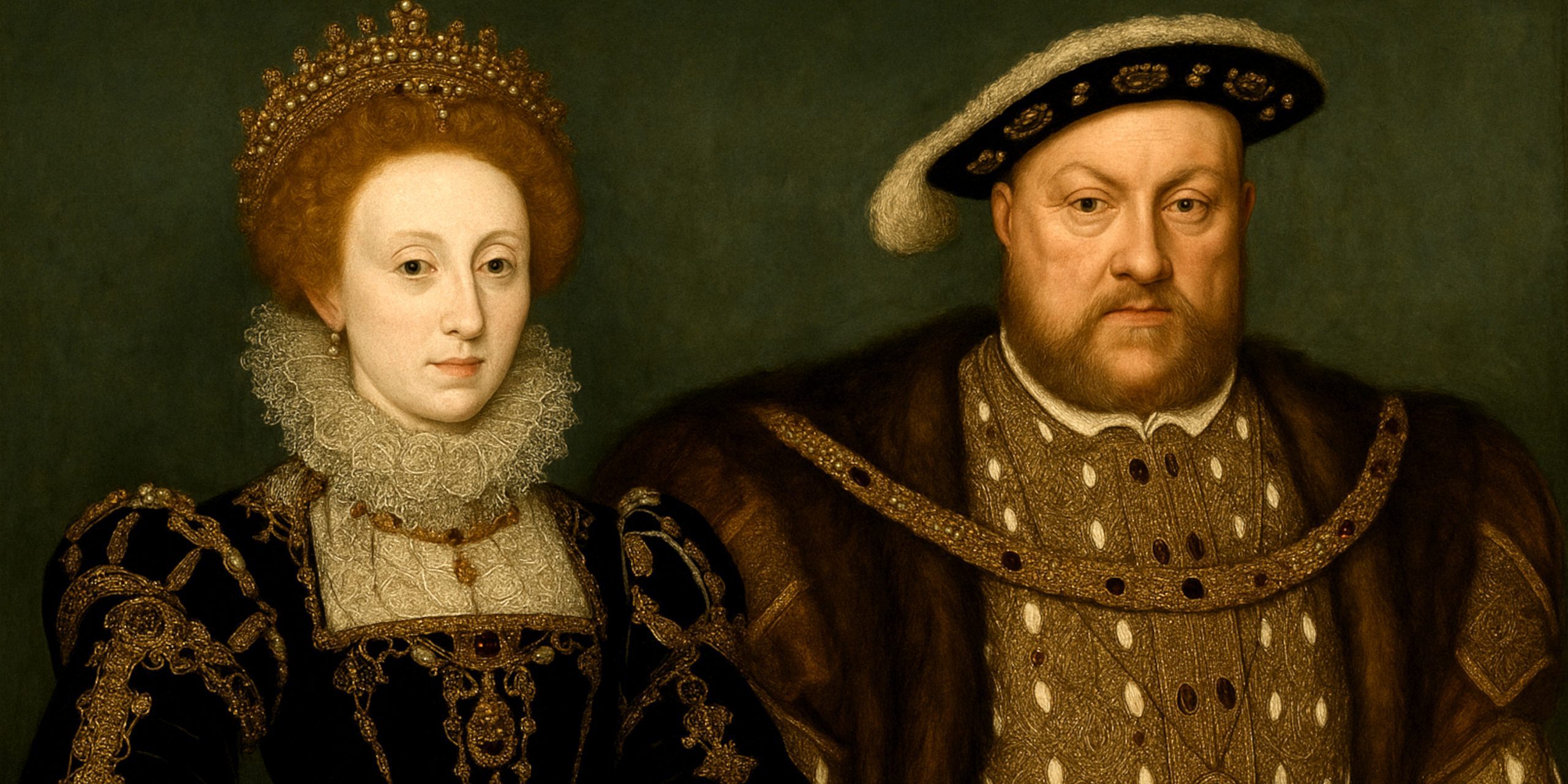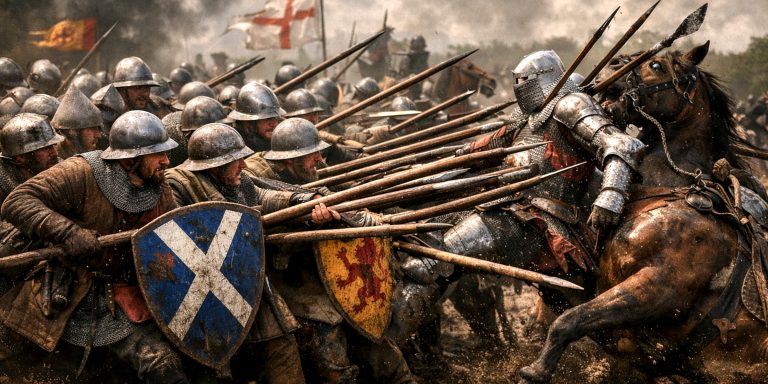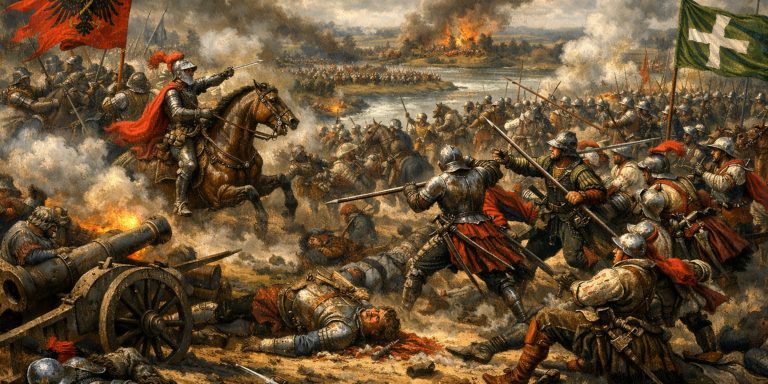
The Tudor dynasty remains one of the most fascinating and misunderstood periods in English history. Between 1485 and 1603, it produced monarchs who reshaped religion, politics and culture in ways still felt today. Yet for all the portraits, plays and period dramas, much of what people think they know about the Tudors comes from half-truths, propaganda, and myth. Let’s separate the reality from the legend.
7 Facts About the Tudors
1. Henry VIII was genuinely athletic in his youth
Before the bloated tyrant of later portraits, Henry VIII was a striking, muscular athlete. He rode, hunted, wrestled and played tennis with enthusiasm. Contemporary ambassadors described him as tall, handsome and full of energy. The real decline came after his jousting accident in 1536, which likely left him with chronic pain and infection that changed both his body and temperament.
2. Elizabeth I cultivated her image as the Virgin Queen deliberately
Elizabeth’s unmarried status was no accident. She understood the political advantages of remaining single. By keeping foreign suitors interested and domestic factions uncertain, she kept her grip on power. The “Virgin Queen” persona was less about chastity and more about sovereignty. Her body became a symbol of England itself.
3. Henry VII was a shrewd financial administrator
Often overshadowed by his more flamboyant son, Henry VII was methodical and cautious. He built a stable economy through careful taxation and avoided reckless wars. He even kept meticulous financial records in his own handwriting. Not romantic perhaps, but essential for establishing the stability his dynasty needed.
4. Tudor England was not perpetually violent
Despite the executions and rebellions that dominate our imagination, daily life for most Tudors was remarkably orderly. The harsh punishments served as deterrents in a society where authority was deeply respected. People’s lives revolved around parish, work, and seasonal festivals rather than constant fear.
5. The Reformation divided families and communities
Religious change under Henry VIII, Edward VI, Mary I, and Elizabeth I was not a simple march toward Protestantism. It was a turbulent and deeply personal upheaval. Families split, neighbours informed on each other, and loyalty to the crown could become a spiritual crisis. It was far more complex than “Catholics bad, Protestants good.”
6. Tudor medicine was surprisingly sophisticated for its time
While bloodletting and herbal remedies sound primitive, Tudor physicians worked within a logical framework based on humoral theory. They also had access to imported spices, minerals, and surgical techniques from Europe and the Islamic world. It was not modern science, but it wasn’t ignorant superstition either.
7. Women had more influence than often acknowledged
From Margaret Beaufort’s political manoeuvring to Elizabeth I’s reign, women in Tudor England found ways to wield power. Even in domestic or religious spheres, they could act as patrons, educators, and moral authorities. The idea of the helpless Tudor woman is far too simplistic.
7 Myths About the Tudors
1. Henry VIII had six wives because he was insatiable
His six marriages were not driven by lust alone but by dynastic anxiety. The failure to produce a surviving male heir haunted him. Each wife represented political strategy as much as personal desire. Henry’s obsession was with legacy, not endless romance.
2. Anne Boleyn had six fingers
A persistent rumour, likely spread by her enemies after her execution. No contemporary description mentions any deformity. Her reputation was blackened to justify her downfall, and physical “proof” of witchcraft fitted neatly into Tudor propaganda.
3. The Tudors were universally loved by their subjects
While they are romanticised today, Tudor monarchs faced constant rebellion, criticism and conspiracy. Henry VIII’s tax policies sparked riots, Edward VI’s reforms caused rebellion in the west, and Elizabeth faced repeated plots on her life. Their hold on power was never as secure as the portraits suggest.
4. Elizabeth I died a lonely, neglected figure
Though her later years were marked by fatigue and melancholy, Elizabeth remained deeply respected. She surrounded herself with trusted courtiers and maintained political control until the end. Her death was solemn, not tragic. The myth of isolation exaggerates her humanity into melodrama.
5. Tudor people rarely bathed
Not true. While they lacked running water, washing was important. Wealthy Tudors owned linen undergarments that absorbed sweat and were changed frequently. Bathhouses existed in towns, and scented water or rose oil was used to freshen up. Their hygiene was limited by technology, not by filthiness.
6. The Tower of London was primarily a torture chamber
The Tower was a royal fortress, palace, and armoury long before it was a prison. While torture did occur, it was rare and legally sanctioned in very specific cases. For most prisoners, confinement and uncertainty were punishment enough.
7. The Tudor age was a golden age for everyone
It was a golden age for some, yes, but not for the poor. Inflation, enclosures, and harsh vagrancy laws made survival difficult for labourers and peasants. The splendour of the court existed thanks to exploitation lower down the social chain. The Tudor myth of national glory overlooks the harsh realities beneath.
The Seven Swords Takeaway
The Tudors are irresistible because they were theatrical, contradictory, and human. They gave England grandeur and turmoil in equal measure. The myth-making started in their own lifetimes, and we’ve been polishing it ever since. Personally, I find the truth far more fascinating than the fictions. The real Tudors were not caricatures of ambition or virtue, but people balancing power, faith, and survival in an age of relentless change.



